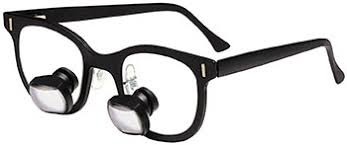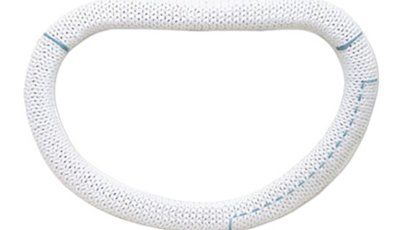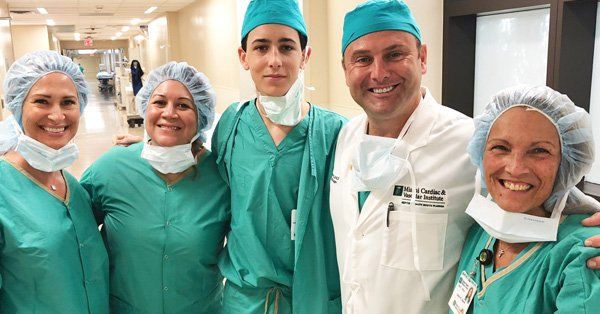Inside The Operating Room: Dr. Allan Stewart Explains Heart Surgery
By Adam Pick on September 25, 2018
It’s not every day I get a chance to see a world-renowned cardiac surgery operate. So… When Dr. Allan Stewart at HCA Healthcare East Florida invited me into his operating room to observe a mitral valve repair and Maze procedure for atrial fibrillation, I immediately booked a flight and hopped on a plane to Miami. As you can see below, this educational experience was extraordinary!
On behalf of our community, I need to extend a mighty “Thank You!” to Dr. Allan Stewart for his relentless support of our patients, their families and friends. It was so wonderful to see you transform this patient’s heart and life!!!
Keep on tickin!
Adam
P.S. For the hearing impaired members of our community, I have provided a written transcript of the video below:
Adam Pick: Hey everybody. It’s Adam. We are here in Miami. I’m thrilled to be with Dr. Allan Stewart of HCA Healthcare East Florida. Thanks for being with me.
Dr. Allan Stewart: My pleasure.
Adam Pick: Yeah, so he’s getting ready. What procedure are you about to do Dr. Stewart?
Dr. Allan Stewart: So it’s a mitral valve repair and a maze procedure. So the goal here is to repair the patient’s mitral valve and also correct atrial fibrillation. So we are going to freeze, we are going to create a firewall inside the heart to restore their normal heart rhythm and also bring the valve back together again and have it function properly.
Adam Pick: Fantastic. We are outside of O.R. 10. You are getting ready to go through the scrubbing process. I see you got some pretty high tech gear about to be put on. Can you explain for the patients out there? What is that?

Dr. Allan Stewart: So these are telescopes. These are called surgical loupes. They are made by a company called Designs for Vision and interesting thing about these, these magnify 2.5 times. Now, there are a variety of sizes. I’m going to use Quarry loupes, for instance, those are 4.8, so much bigger telescopes in these but for a valve you don’t really need to have much magnification but we do need light. This little light here is fantastic because it sites right on top of the loupes and it’s weightless. If you ever notice these old time surgeons they have big humps on their back so they are walking around like this, well that’s because they are wearing big heavy telescopes and headlights for their entire career and this sort of takes that away. Gives the same degree of light but it also is light as a feather, so I kind of like these.
Adam Pick: Thank you Dr. Stewart for your support for all of our patients, our community and let’s have a great safe and great outcome here with this patient.
Dr. Allan Stewart: Can’t wait. Thanks for coming.
Adam Pick: Thanks so much.
Adam Pick: Dr. Stewart, as you’re performing this mitral valve repair and you’re going ahead and you’re putting in the mitral annuloplasty ring, can you go talk about potentially some of the advantages of why patients may want a repair versus a replacement? That’s a common question they have.

Dr. Allan Stewart: Absolutely. You’re always better off keeping us what God gave us as long as it’s healthy. This keeps all the mitral valve leaflets and the attachments of the mitral valve to the heart and that enables the heart to function properly. The second is that the man made solutions are not very durable. We have two options really about a mechanical valve, which is usually long lasting, however, now we are putting a piece of carbon inside the body and that is noisy for one, it keeps spouses up at night, and secondly, it requires one to take a blood thinner for the rest of their life which is not a trivial undertaking for people. That impacts their quality of life and it will lead to change in food and some people are foodies and they like their green leafy vegetables things that are rich in vitamin care, not great for patients on Coumadin. Also, it impacts ones quality of life in endurance sports. For instance, downhill skiing or bicycling because you are on a blood thinner for the rest of your life so it’s not really a great idea to be engaging in high risk sports, so that’s one option. The second is a biological heart valve option.
The biological valves in the mitral position don’t last as long and the reason why is because when the heart’s squeezing to pump blood to the rest of the body, the mitral valves job is to shut and because it’s job is to shut it withstands very high pressure closed for a long period of time, so because it’s withstanding that pressure, that’s its job is to hold that pressure, it wears out sooner than say a valve in the aortic position. A biological valve in the mitral position usually won’t last more than 8 to 10 years.
Adam Pick: Thanks so much.
Dr. Allan Stewart: This patient had what’s known as posterior leaflet restriction and that’s because some of the attachments, those cords that look like a parachute cord has gotten thickened. Maybe there was a an infection overtime, maybe there was a hint of rheumatic fever, who knows, but for whatever reason one of these leaflets, one of these portal attachments thickened and when it gets thickened it gets shortened. When it gets shortened it pulls down the leaflet and by pulling down the leaflet the leaflet can’t come up to the position it wants to. It gets restricted. That’s what causes leakage.
Adam Pick: I’ve heard that some patients get new cords?
Dr. Allan Stewart: They do, yeah. In this case, these are what’s called secondary mitral valve chordae. Secondary cords don’t necessarily need to be replaced they can just be cut with somewhat impunity. They are sort of an insurance policy in the heart. Those primary cords which are absolutely necessary and secondary cords which are sort of back up which the Biking analogy, you know the people that ride in the back of the Peloton, they are not the leaders.
Adam Pick: Dr. Stewart can you explain where you are in the procedure now and maybe a little something about the tool that you are using there.
Dr. Allan Stewart: This is a cryo catheter and the cryo is that’s its freezing, essentially freezing a pathway inside the heart and the reason we are doing that is to create essentially a firewall or a new pathway of electricity to this guy out of atrial fibrillation. Our goal here is to create a new way of guiding electricity through this patient’s body and that will hopefully correct his atrial fibrillation and put him back in a normal rhythm. As an insurance plan for that, we are also going to do is put a clip into his atrial appendage – “Go” – and between the two of those things we hopefully will keep him off anti-coagulation of a successful valve repair, normal rhythm, no ability to climb and he will go on and live a normal life.
Adam Pick: I just heard you say “go” to a part of the incredible team here, what does that mean when you say “go”?
Dr. Allan Stewart: Right now I put the probe where I wanted it. There’s a specific place in the Maze procedure to create lesions in order to guide the electricity. You think like a mouse trap or a maze that’s what we are sort of creating. They were creating lesions that will prevent that funny rhythm from starting. I guide it in but then I can’t – there’s not a button on here to press, so my assistant will then hit the start and then there’s a prescribed period of time to create a full thickness freeze inside the atrial.
Adam Pick: For the patients out there who may not be familiar with the term ‘lesion’, what does that mean?
Dr. Allan Stewart: So what we are doing is creating a full fitness freeze burn. We are creating freezer burn inside the heart and that’s going to create a firewall, if you will, for these a burn or odd or pathological rhythms to get through, so they’ll hit that area and stop, so they’ll be isolated. Most of the crazy rhythms start in the pulmonary veins so we are going to isolate them. We are going to create a firewall, the grey wall, if you will, from Game of Thrones, we want to create a frozen wall around the pulmonary veins and that way the “White Walkers” or the atrial fib generating impulses can’t get through the wall.













